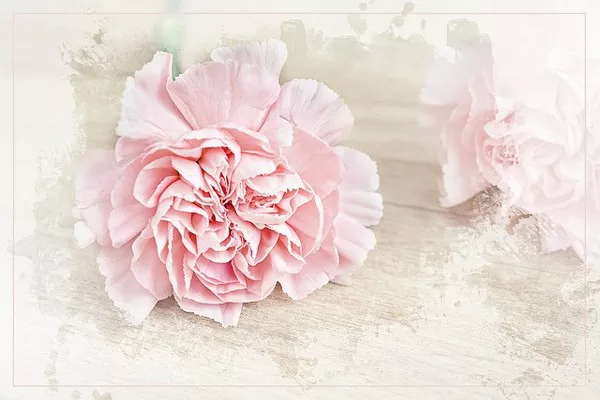Dried flowers, often treasured for their beauty and sentimental value, have been used for centuries as decorative elements, mementos of special occasions, and even for herbal remedies. Preserving dried flowers allows us to hold on to the memories they represent, whether it’s a bouquet from a cherished event, a meaningful gift, or simply the beauty of nature captured at its peak. This article offers a comprehensive guide on how to save dried flowers, ensuring they remain vibrant and beautiful for years to come.
Understanding the Importance of Proper Drying
Before we delve into the techniques and methods for preserving dried flowers, it’s crucial to understand why proper drying is essential. Proper drying not only maintains the visual appeal of the flowers but also prevents the growth of mold, mildew, and decay. By following the right techniques, you can preserve both the aesthetic and sentimental value of your dried flowers.
Selecting the Right Flowers
The first step in preserving dried flowers is selecting the right ones to work with. Not all flowers are suitable for drying, as some may lose their color, shape, or fragrance during the drying process. Flowers with sturdy petals and vibrant colors are generally better candidates for preservation. Popular choices include roses, lavender, statice, and baby’s breath, but many other varieties can be successfully dried as well.
The Harvesting Process
When it comes to preserving dried flowers, timing is everything. Harvesting your flowers at the right stage of their growth is crucial for optimal preservation. Here’s how to go about it:
Choose flowers in the morning when their moisture content is lower. Avoid picking flowers that are damp from morning dew or recent rainfall.
Use sharp pruning shears or scissors to cut the stems, making clean and precise cuts. This prevents damage to the flowers and aids in the drying process.
Remove any excess leaves or foliage from the stems, as these can harbor moisture and slow down drying.
Harvest flowers when they are in their prime, just before they reach full bloom. This ensures the best color and shape retention.
Drying Methods
There are several methods for drying flowers, each with its own advantages and ideal use cases. Let’s explore some of the most popular techniques:
Air Drying:
- Air drying is the simplest and most natural way to preserve flowers.
- Bundle the flowers in small bunches and hang them upside down in a dark, dry, and well-ventilated area.
- The process can take several weeks, so patience is key.
This method is suitable for flowers like roses, lavender, and statice.
Silica Gel:
- Silica gel is a desiccant that absorbs moisture and helps preserve the shape and color of flowers.
- Place the flowers in a container with a layer of silica gel and gently cover them completely.
- Seal the container and leave it for a week or longer, depending on the flower type and size.
Silica gel is excellent for preserving flowers with delicate petals, such as daisies and pansies.
Pressing:
- Pressing is a method ideal for creating flat, decorative flower arrangements, such as in scrapbooks or greeting cards.
- Place the flowers between layers of absorbent paper, such as blotting paper or parchment paper.
- Apply pressure, either with heavy books or a flower press, and leave the flowers to dry for a few weeks.
Pressing works well for flowers like violets, dandelions, and forget-me-nots.
Microwave Drying:
This method is quick and suitable for small flowers and leaves.
- Place the flowers between sheets of microwave-safe paper towels and microwave them in short bursts at low power.
- Check the flowers regularly to prevent overheating, as microwave drying can be tricky.
This technique is best for flowers like pansies, ferns, and small roses.
Freeze Drying:
- Freeze drying is a professional-grade method that requires specialized equipment.
- Flowers are frozen and then placed in a vacuum chamber, where moisture is sublimated from the flowers, leaving them intact.
This method retains both color and shape exceptionally well but is expensive and not practical for home use.
Choosing the Right Method
The choice of drying method depends on the type of flowers you’re working with, the desired outcome, and the resources at your disposal. For instance, air drying and silica gel are excellent options for most home enthusiasts, while professional freeze drying may be reserved for more valuable or intricate flower arrangements.
Post-Drying Care
Once your flowers are dried, it’s essential to take proper care of them to ensure their longevity. Here are some tips:
Handling: Be gentle when handling dried flowers, as they can be fragile. Use soft brushes or compressed air to remove dust and debris.
Storage: Store your dried flowers in airtight containers or display cases to prevent exposure to moisture and dust. Keep them in a cool, dry place away from direct sunlight.
Avoid humidity: High humidity can cause dried flowers to rehydrate and lose their shape and color. Ensure your storage area is moisture-free.
Rejuvenation: If your dried flowers start to lose their color or become brittle over time, you can lightly spray them with a floral preserving spray or glycerin and water mixture to revive their appearance.
Conclusion
Preserving dried flowers is an art that allows us to cherish the beauty and memories associated with them for years to come. Whether you choose to air dry, use silica gel, press, microwave, or even opt for professional freeze drying, proper techniques and care are essential to ensure your dried flowers remain vibrant and beautiful. By following this comprehensive guide, you can embark on a journey to save your dried flowers and preserve the moments they represent.


